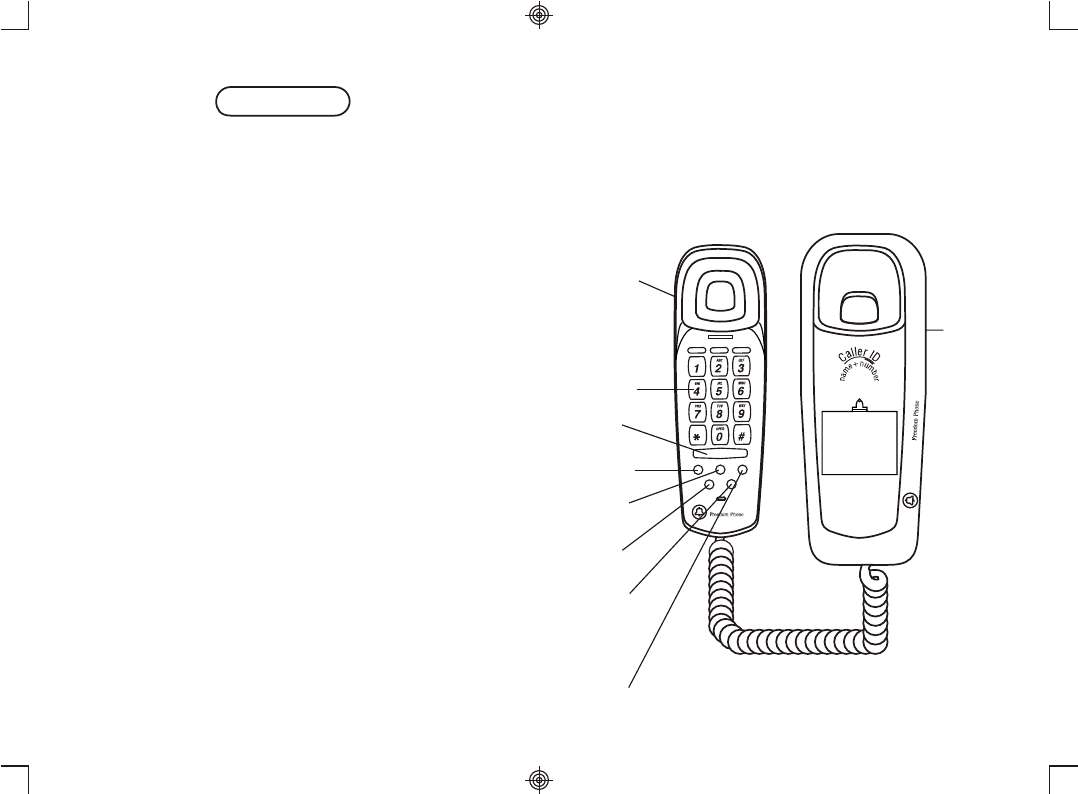
3
S
o
u
t
h
w
est
e
r
n
B
e
l
l
S
o
u
t
h
we
s
t
e
r
n
B
e
l
l
FLAS
H
M1 M2 M3
MEMORY
MUTE
STORE
REDIAL
RESET
Location of Telephone Controls
RECEIVER
VOLUME
CONTROL
MEMORY
BUTTON
MUTE
BUTTON
REDIAL
BUTTON
RINGER
OFF/LO/HI
SWITCH (ON
BOTTOM OF
BASE)
KEYPAD
STORE
BUTTON
FLASH
BUTTON
RESET
BUTTON
CONGRATULATIONS!
You have purchased a 13 MEMORY CALLER ID TELEPHONE
manufactured to the highest standards of Southwestern Bell Freedom
®
Phone . Before installing and operating, be sure to read this
Owner's Manual.
4
Safety Instructions for Batteries
CAUTION
TO REDUCE THE RISK OF FIRE OR INJURY TO PERSONS,
READ AND FOLLOW THESE INSTRUCTIONS.
1. Use only the size and type of batteries mentioned in the Owner's
Manual.
2. Do not dispose of the batteries in a fire. The cells may explode.
Check with local codes for possible special disposal instructions.
3. Do not open or mutilate the batteries. Released electrolyte is
corrosive and may cause damage to the eyes or skin. It may be toxic if
swallowed.
4. Exercise care in handling batteries in order not to short the batteries
with conducting materials such as rings, bracelets, and keys. The
batteries or conductors may overheat and cause burns.
5. Do not attempt to recharge the batteries identified for use with this
product. The batteries may leak corrosive electrolyte or explode.
6. Do not attempt to rejuvenate the batteries identified for use with this
product by heating it. Sudden release of the battery electrolyte may
occur causing burns or irritation to eyes or skin.
7. When replacing batteries, all batteries should be replaced at the
same time. Mixing fresh and discharged batteries could increase
internal cell pressure and rupture the discharged batteries.
8. When inserting batteries into this product, the proper polarity or
direction must be observed. Reverse insertion of the batteries can
cause charging, and that may result in leakage or explosion.
9. Remove the batteries form this product if the product will not be
used for a long period of time (several months or more) since during
this time the batteries could leak in the product.
10. Discard "dead" batteries as soon as possible since "dead" batteries
are more likely to leak in a product.
11. Do not store this product, or the batteries identified for use with
this product, in high-temperature areas. Batteries that are stored in a
freezer or refrigerator for the purpose of extending shelf life should be
protected from condensation during storage and defrosting. Batteries
should be stabilized at room temperature prior to use after cold
storage.















